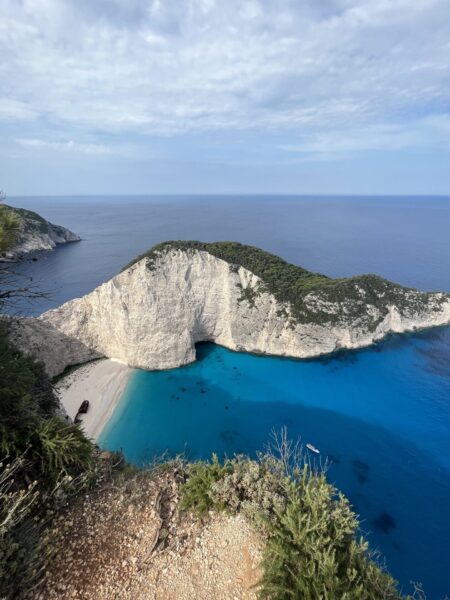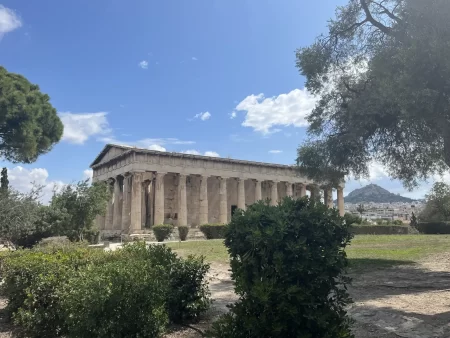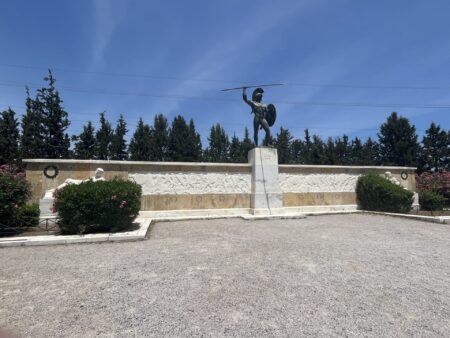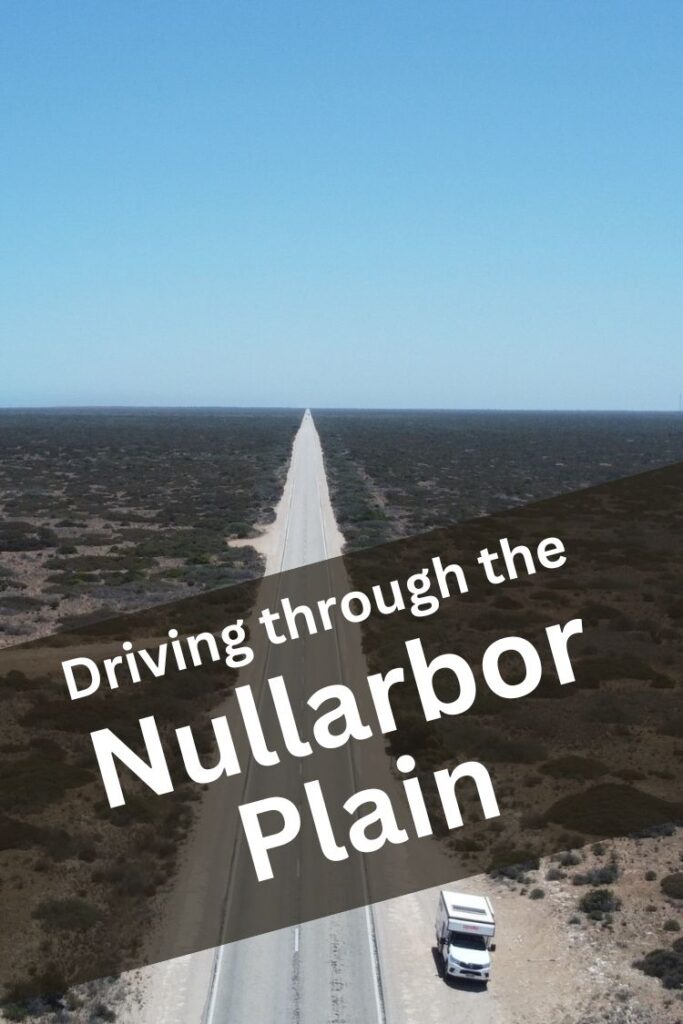Driving in Greece may be the quintessential Mediterranean trip. Winding roads through mountains with crystal clear waters on one side and endless rows of olive trees on the other. All accompanied by the deafening sound of cicadas buzzing under the Sun.
Here you will find information, as well as some tips and personal impressions on driving in Hellas. My experience comes from driving from Athens, through the Peloponnese, and into mainland Greece towards Thessaloniki, as well as on the islands of Santorini and Zakynthos. In my younger and more reckless years, I have also driven on other islands, such as Crete, Mykonos, Ios, and Kos, with quad bikes, scooters, or motorcycles. For some reason, I always return to this wonderful country.
For more information be sure to check out this article on my Greece Road Trip
Traffic Rules Basics
First and foremost, the basics: in Greece, driving is on the right side of the road with the steering wheel on the left. So overtaking is done on the left.
All common driving requirements of developed countries are followed, i.e., mandatory seatbelts, and it is illegal to drive under the influence (limit at 0.05%).
As per common traffic rules with RHT, priority must be given to vehicles coming from the right, except on roundabouts which are anticlockwise, with way given to those already in the roundabout (so to the left). Outside of main urban areas, traffic moving along a main road has priority at an intersection.
Speed limits are 50 km/h in urban areas, 90–110 km/h outside urban areas, and 130 km/h on highways.
Driving Requirements

The legal driving age is 18. For motorcycles not exceeding 50 cc, the driving age must be 16 or over.
For car rentals, the minimum age is 21, and drivers should have their license for at least one year.
An international driver’s license is not required.
As in many other places, car rental companies may require a credit card deposit.
Road Conditions
Rented cars are by no means bad, but they are also not in prime condition. It is best to rent a small, compact car because of the narrow roads in small towns, so Renault, Fiat, Toyota, Peugeot, etc.
80% of Greece is mountainous. As such, roads often wind up hills, mountains, and coastlines. Also, because of this and the common compact cars, you need to be able to handle a clutch. Even in Athens, there are tons of hills and slopes, so being comfortable with manual driving is a must.
Driving on islands

A special mention needs to be made of the islands, especially the smaller ones. Be prepared for off-road tracks and extremely steep climbs or descents. In the smaller but highly visited and geared towards tourism islands such as Mykonos, the paved roads are like glass and are very slippery. Taking a scooter and driving around the islands is somewhat part of the visit experience, but given the other clueless drivers and the state of the roads, it might be the most dangerous place to ride on two wheels.
One thing that is quintessentially Greek is using ferries to get to the islands and taking your car with you. Crossing times are often very short, and taking your rental on a ferry and proceeding to explore an island is a wonderful experience in itself. In this regard, be sure to arrive at the port 1 hour earlier and get in line with the other cars. Generally, the earlier you get on, the sooner you will get off (but after the trucks transporting goods). That being said, there is a bit of chaos when the ship arrives, as there will be multiple lines, not enough people managing traffic, and so on. When getting in, try, if possible, to stick as close as possible to the right side, as there are greater chances that your left side will have more space and you can actually get in the car when getting ready to disembark without waiting for half of the vehicles to move before you can actually get in.
Car Insurance

Make sure you get car rental excess insurance before your trip to protect yourself from unexpected costs. It’s almost always cheaper to do this in advance.
I almost never take additional car insurance, but because of all the points above, perhaps it is wise to get additional coverage, as dirt roads or potentially crashing scooters on islands are, again, more common than one would like. Valuables should also be carefully taken into account, as windows can be broken to get into cars parked on the side of the road.
Road Signs
Road signs are international and very easy to understand. All signs are written in Greek but also in English with the Latin/”international” alphabet.
In general, Greece is so touristic overall that English is widespread. Even the old lady peeling potatoes will be able to understand some basic English.
Road tolls
Because of the mountainous nature of the country, it is best to use the highways to move around unless you want to enjoy the scenery through the winding roads. Highways improve driving times a lot, and these can get 30-50% longer when taking the secondary roads.
All highways are toll roads, with several segments with toll booths. Tolls are quite cheap, amounting to a couple of euros per segment.
Fuel
Gas is done the “non-American” way, for lack of a better word for it. This means payment is not done upfront to unlock the pump. Gas stations are usually serviced.
Gas prices are high in Europe and, understandably, even higher on the remote islands.
Parking
As with almost all destinations in Europe, parking is paid within cities. Outside of cities, it is more of a wild west, with cars parked wherever they do not create problems for other drivers.
Police
On toll roads, there are a lot of speed cameras, but elsewhere you will not find them.
Traffic lights do not have cameras, and there are very few police blocks.
Side note: this is not related to traffic rules, but when it comes to rental cars, most of them do not have no-smoking policies in the vehicles.
Driving

As stated above, driving in Greece can come with its own challenges, depending on where you are.
Be wary of ditches on the side of the roads and two-way traffic in smaller islands and towns. Also, it is of major importance to get a small car. Driving into small towns, you will find roads where you can barely pass through and, as always, probably with steep slopes and rock houses on both sides. Never mind that these roads are almost always two-way. It is therefore important to be dynamic and nimble when driving your vehicle through these narrow streets and sharp turns.
Driving Etiquette

Driving etiquette follows the “Mediterranean approach”. This is my personal way of describing it, for lack of a better word. What I mean is that it is a way between a highly organized and strong infrastructure (like in North America, for example) and an absolutely chaotic beehive and traffic jams (like in Southeast Asia).
Being nimble and dynamic is key. Cars are small, but there are also large slow trucks and small skittering mopeds. Pedestrians cross outside of designated crossing areas, but they don’t randomly jump in the middle of the road. Honking is because you are being slow and making others wait. But it isn’t on Middle Eastern or Asian megacity levels where the horn is used more than the steering wheel.
The general idea is to be reactive, that there is no “ownership” of the road, and that it is treated more as a service, but with respect and attention to others.
Being cut off is nothing out of the ordinary, as are cars stopping on a lane in cities because they need to do some commissions.
In the more touristic islands, there is also the unpredictable nature of visitors on scooters and quads. Most may not have even ever driven on two wheels, and you should expect (hopefully not) that some tourist in a bathing suit just falls over in front of you. Personally, I fell twice in Mykonos on the glass-like roads and once in Ios on an impossible dirt road descent.
Driving Quirks
As stated above, there is a general lax approach to traffic. On islands, it is almost impossible to see people wearing helmets while on two wheels. Outside of cities, parking is done following the “I stop now on the side of the road” approach.
Flora and Fauna

When it comes to flora, you can expect the Mediterranean landscape but dialed up to 100. That means endless stretches of olive trees and maritime pines, deafening cicadas, and arid shrubbery intermitted by incredibly colorful Bougainville.
The fauna you may encounter during your drives include goats, cats, dogs, and chickens. There is quite a bit of road kill, especially cats. There are many stray cats in Greece, and I don’t know why, but they seem less “traffic savvy” than usual.
Not related to driving, but one of the best aspects of driving in Greece is that on many small coastal roads, the waters will look so inviting that it is easy to just park the car on the side of the road and jump in for a quick dip. This is so much better than going to the properly serviced and somewhat rare sandy beaches. However, crystal-clear waters and rocky formations are prime environments for sea urchins, which can easily be stepped on and touched when climbing on the rocks. These, together with mosquitoes and the searing sun, are the main obstacles to enjoying a perfect time in the country.






